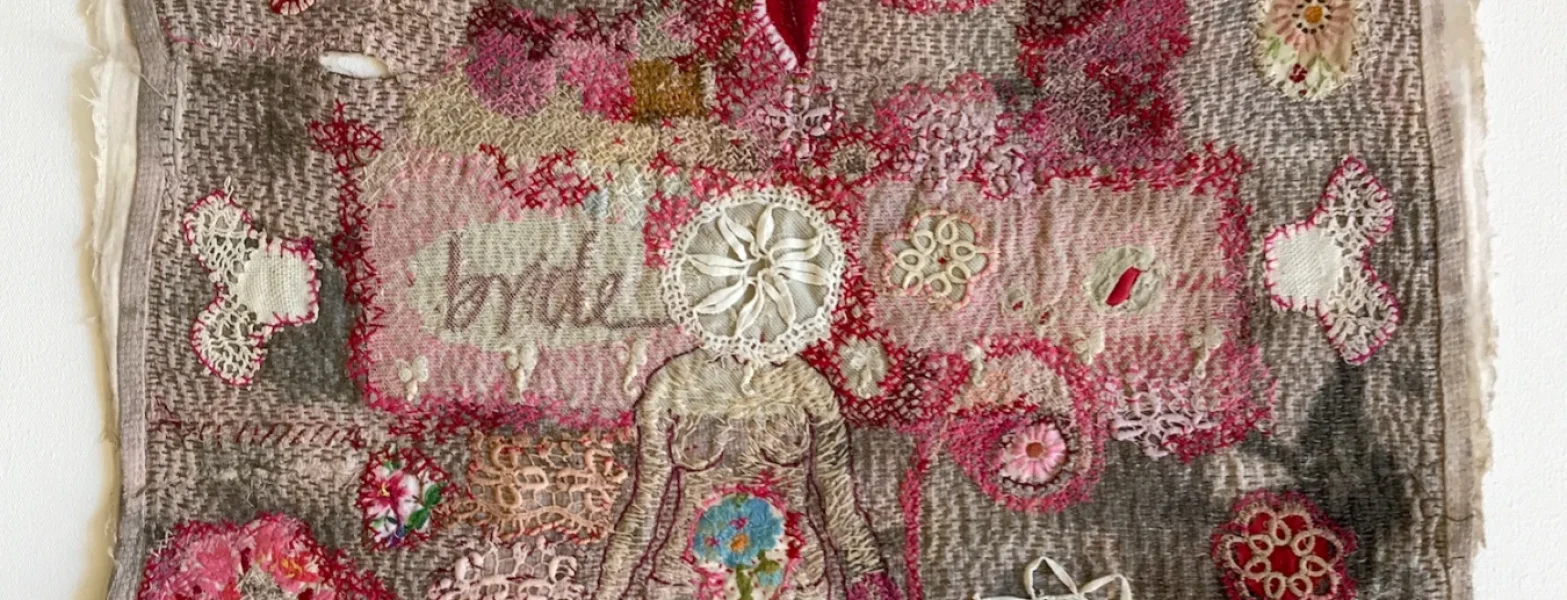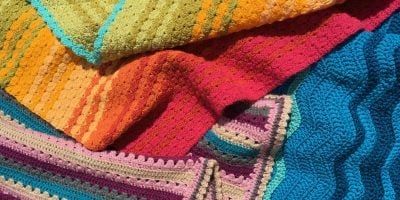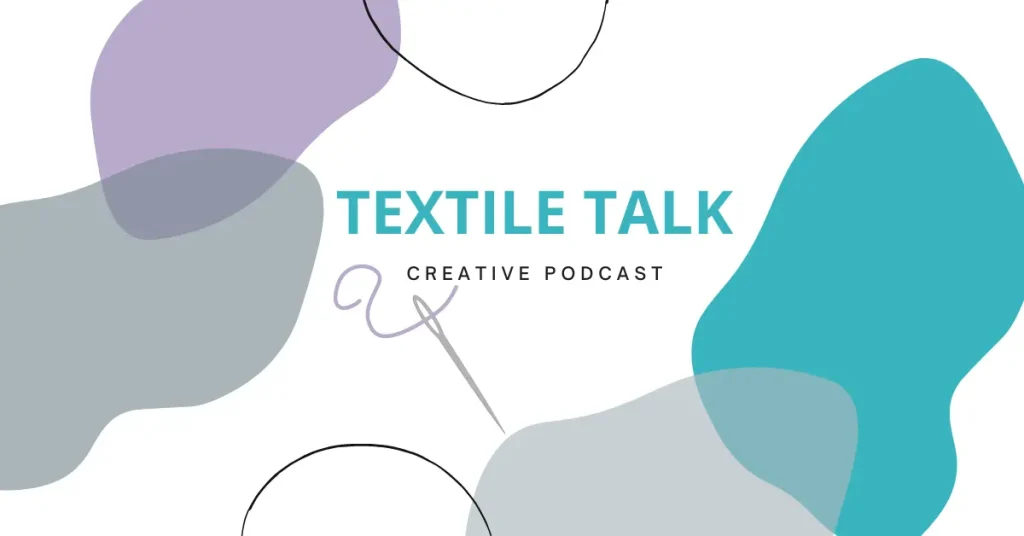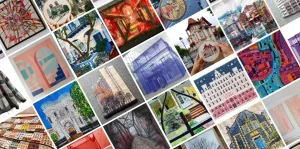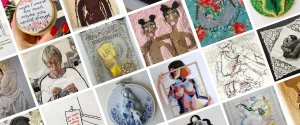Willemien De Villiers is a South African textile artist whose work transforms forgotten and worn domestic fabrics into deeply evocative pieces. With a Fine Art degree from the University of Pretoria and a background in design and textile printing, her artistic journey has been shaped by a lifelong fascination with natural fabrics and patterns.
Her creative process begins with vintage fabrics—stained, torn, and marked by time—such as tea tray cloths, doilies, and tablecloths. Using techniques like cyanotype, eco-printing, and intuitive stitching, she layers narrative and texture onto these domestic materials. Her work often features simple stitches such as mending, blanket, and cross-stitch, reflecting a deliberate and meditative approach to her craft.
A feminist perspective is central to her practice, with themes that explore the complexities of women’s lives. Stains and scars on cloth serve as metaphors for the often-overlooked labour and resilience of women. Her art also reflects the dualities of her environment in Cape Town, a city of profound natural beauty yet shadowed by significant societal challenges, including gender-based violence.
Willemien’s inspirations include celebrated artists such as Tracy Emin and contemporary textile artists like Michelle Kingdom. She is currently preparing for a solo exhibition at Eclectica Contemporary in Cape Town in 2025 and participating in group shows, including one at the Iziko Museum. Through her work, she intertwines memory, identity, and hope, offering a poignant exploration of the human experience through textiles.
Willemien De Villiers
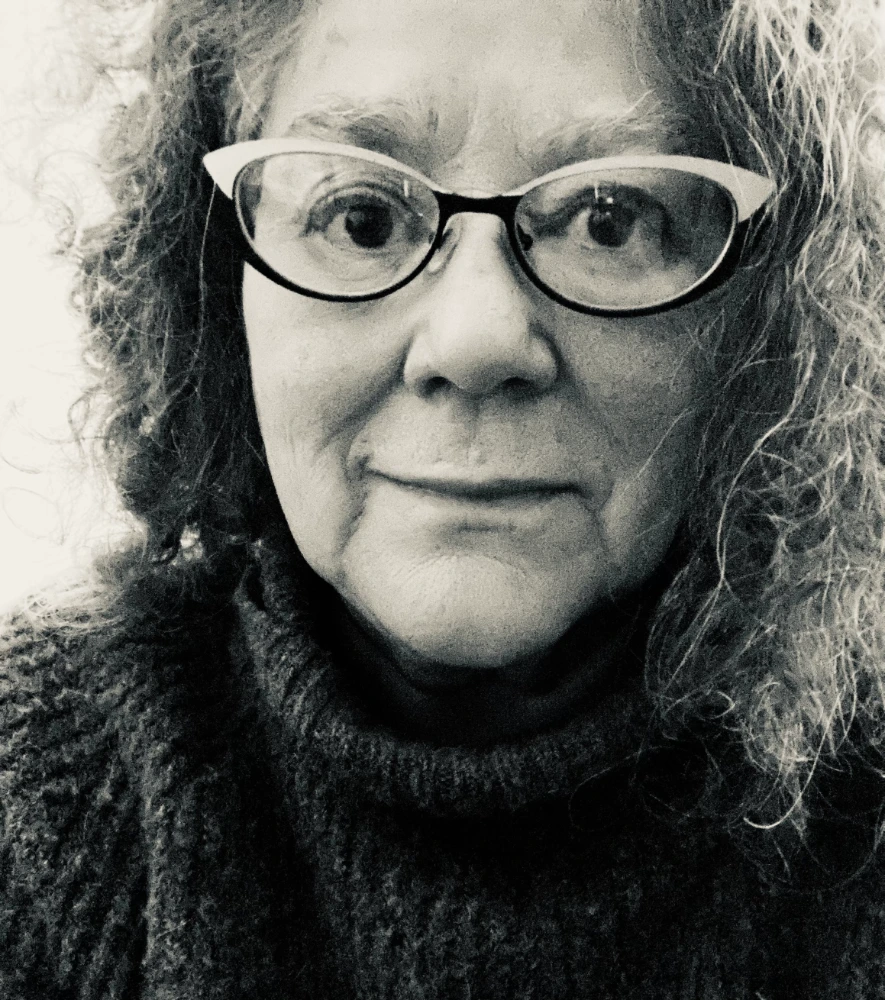
“As a feminist, I’m inevitably tuned into, and connected to the female experience. What it means to be woman in this world, today. This awareness informs my choice of imagery, my themes, even my use of colour. I have an acute awareness of the domestic burdens still placed on women, even in this day and age, of the expectations that exist for women to (literally and figuratively) ‘smooth things over and make nice’.”
Tell us about your journey to stitching?
I grew up in a home that wasn’t visually creative in any way. My father was an engineer, and my mother a scientist. Art didn’t feature in my daily life, and yet I started making things from a very young age – dolls from seeds and twigs in the garden, dressing them with petals and leaves, making my own paper dolls, drawing my own comic books, always having a book and pen or pencil nearby.
I have loved natural fabrics from a very young age and seem to have an inborn aversion to anything synthetic. I especially love the smell of linen and cotton and have clear memories from childhood of scrunching up the corners of rolls of fabric to sniff. My mother made most of our clothes, and I loved going to fabric shops with her – I found the neat, patterned order of all the rolls of fabric very soothing, as well as the stands of sewing machine and embroidery threads, arranged by colour.
My maternal grandmother did some machine embroidery, as well as by hand, but we weren’t close (geographically and emotionally) so I only became aware of this much later, after her death. I can’t really pinpoint why I started stitching on cloth in my late teens, early adulthood, only that I often carried items with me to work on wherever I found myself – very free, instinctual stitching, nothing ‘proper’ or traditional.

How much has your training in Fine Art influenced your work?
I majored in Design, and loved spending time in the printmaking studio. I’m drawn to patterns and processes that have an inbuilt repetitive component. Screen printing, etching, lino- and woodcut, litho. The act of stitching by hand is by its very nature repetitive, and I’m very drawn to its calming and meditative effect. After finishing my studies, I worked as a designer at a textile printing company that further honed my eye and instinct for pattern and colour.
My formal training as an artist must have some influence on how, or even why, I work, but, along with all my other life and work experience, it has – after so many years – been completely integrated into my processes. There is no conscious awareness of it.
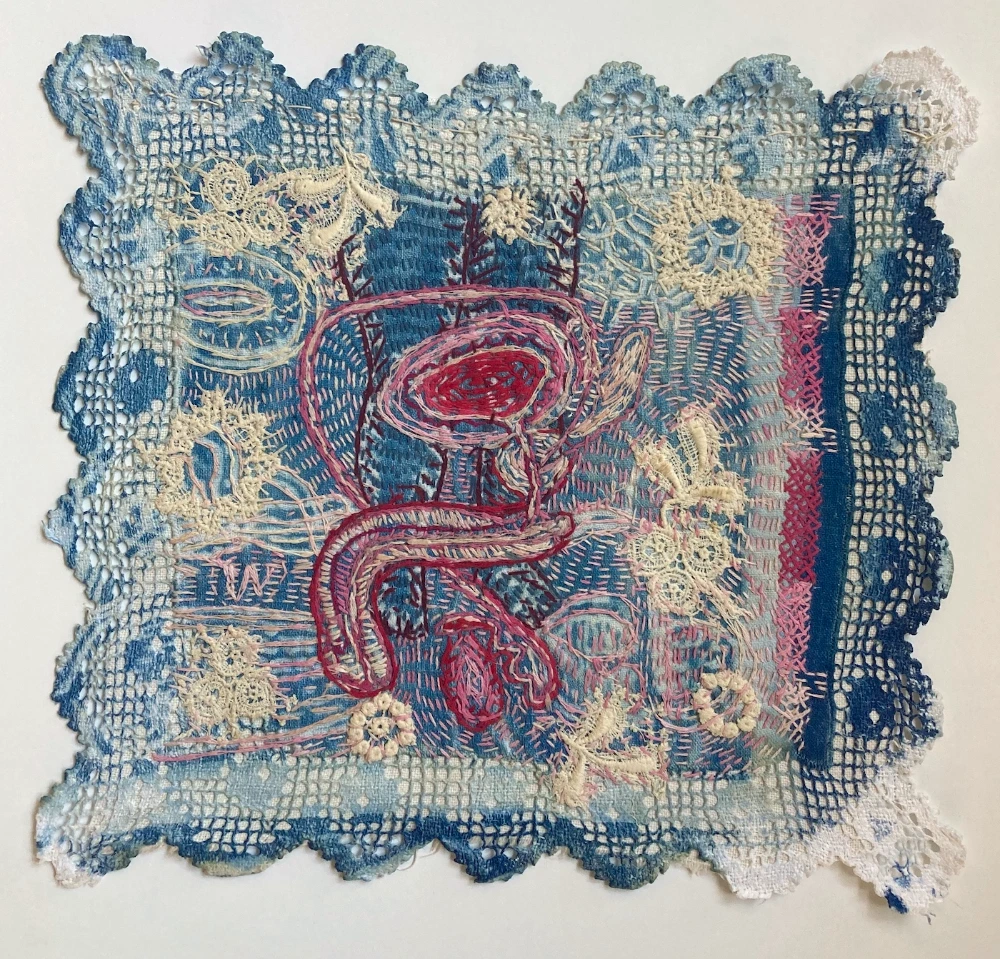
What are the materials and processes you use in your work?
For my stitched work, I always use vintage fabrics that have either been given to me, or which I have found in charity shops. Tea tray cloths, tablecloths, doilies, etcetera. I call these domestic cloths, because they were made to be of use at home, either as pure decoration, or as a useful item, like a dishcloth. I prefer them to have signs of wear and tear, preferably stained and torn. Traces of a previous life is what I find most inspiring. I only use cotton or linen (or a mixture) as my base cloths. I often stain my fabric, or add visual texture using cyanotype, and eco printing. I never start stitching on a blank piece of fabric.
I always line the top cloth that I’m going to work on with a cut-up old sheet, or calico, to give it more weight and stability. The texture of the stitches is also more pronounced when working on two layers of fabric.
I work in a very intuitive way, being led by what the found fabric tells me when I handle it. If the cloth has embroidery on it, I turn it around so that I can add my work to the reverse side. I do this as a way to honour the previous stitcher’s work. I never have a clear sense of what I’m going to do, but once I start, the narrative unfolds spontaneously. I draw or trace my imagery onto the top cloth (I have a large box full of imagery I’ve collected over many years) and then I start stitching. I use a limited amount of stitches: mending (or running) stitch, blanket- and cross stitch. For that reason I don’t see myself as an embroiderer, preferring the term stitcher. I sometimes add bits of lace or torn pieces of fabric to my stitchings, appliqué-style.
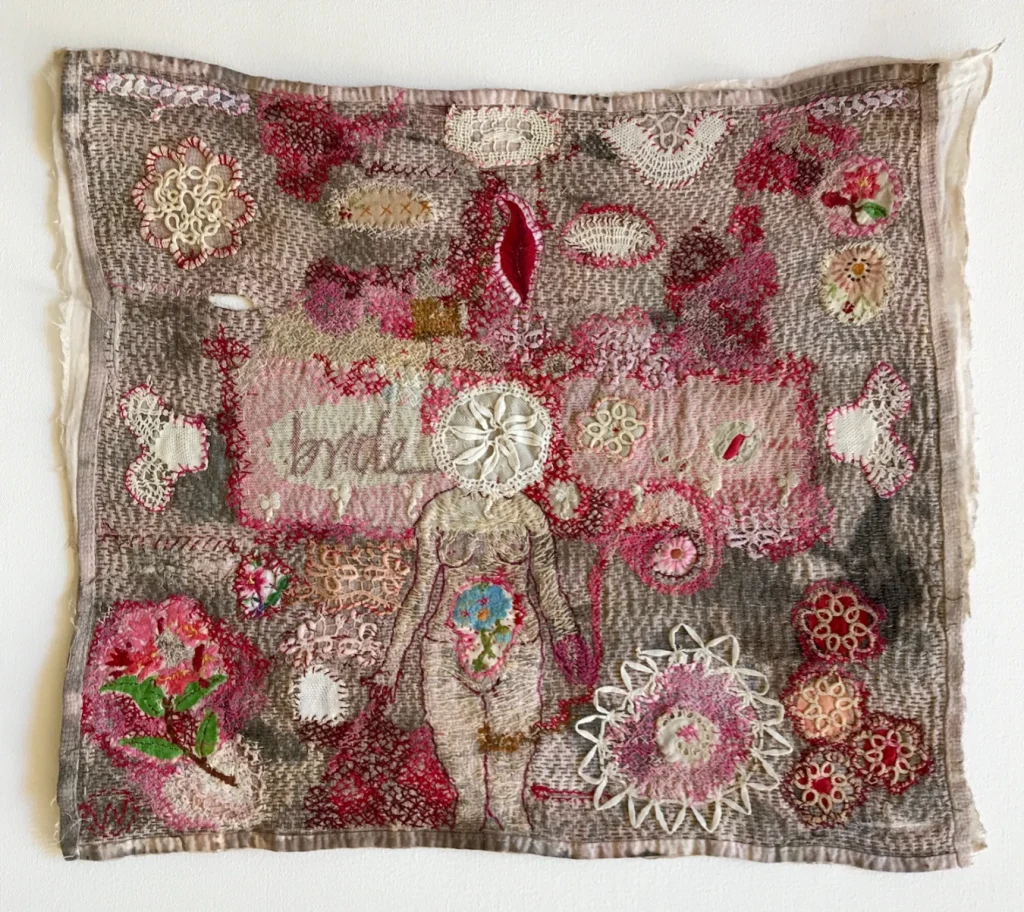
You are very interested in stains, tears and mends on cloth and clothing. Can you tell us why this is and how it came about?
As a feminist, I’m inevitably tuned into, and connected to the female experience. What it means to be woman in this world, today. This awareness informs my choice of imagery, my themes, even my use of colour. I have an acute awareness of the domestic burdens still placed on women, even in this day and age, of the expectations that exist for women to (literally and figuratively) ‘smooth things over and make nice’.
The idea of stains excites me, as a metaphor for the habitual sanitising of women’s messy, and often devalued, lives. And of course, women are still mainly responsible of dealing with the stains (literal and figurative) of day-to-day domestic life.

You live in a beautiful area with a very diverse history. How much of this do you feel contributes to your design and work?
Although Cape Town’s vast natural beauty is inspiring, it doesn’t influence my work in the same way it would if I were a landscape painter, for example. I’m more interested in interior landscapes that traverse my daily experiences, sometimes escaping into a fantastical world with imagined realities. I am however very influenced by the high levels of gender-based violence in my city, and South Africa as a whole. Cape Town is known as the rape capital of the world. Toxic patriarchal values are still, sadly, very prevalent, even though great efforts are made to change this through education. Through my work I hope to raise awareness, but also hope.
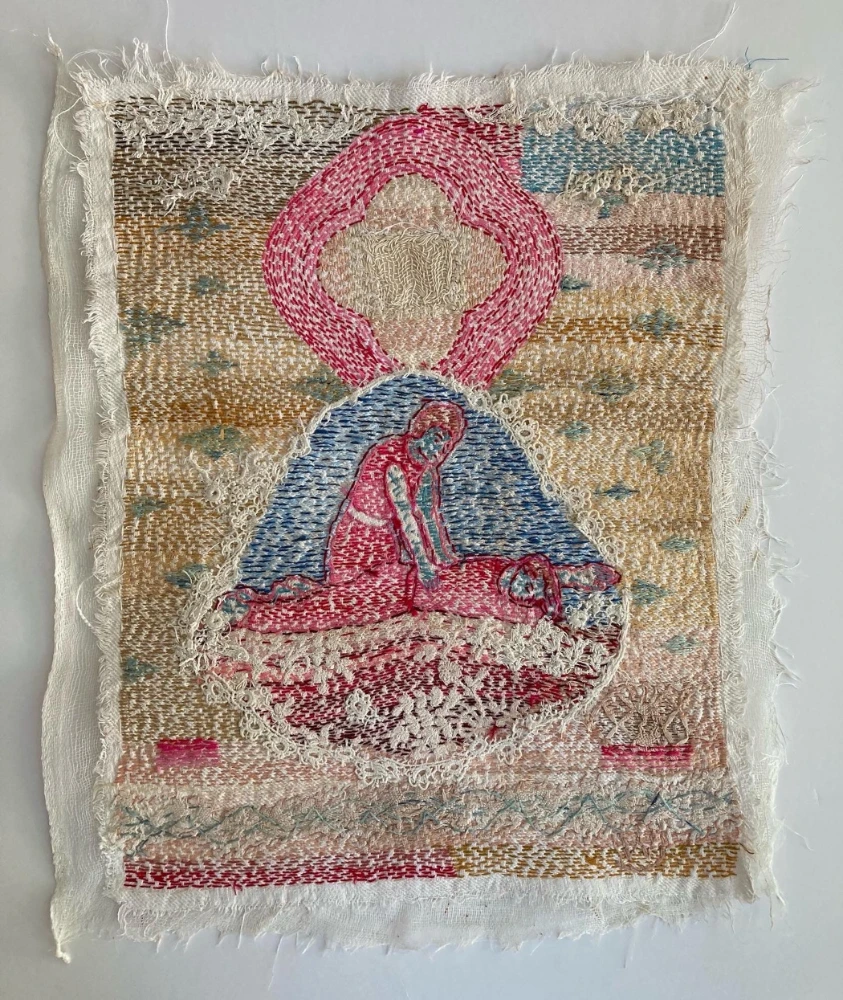
What artists inspire you personally?
I find Tracy Emin’s life and work extremely inspiring and would love to meet her. There are too many contemporary stitchers/embroiderers to mention, but American artist Michelle Kingdom comes to mind, as well Dutch artist Tilleke Schwarz and UK artist Maria Wigley.
What do you have coming up?
I’m currently hard at work at making pieces for a solo exhibition towards the end of 2025 at Eclectica Contemporary in Cape Town. They’ll also represent me at the upcoming Investec Art Fair in February 2025. I’m also taking part in a group show at the Iziko Museum in Cape Town in April – a very busy time lies ahead!
Discover more about Willemien De Villiers work and processes:
Workshops: https://willemien-de-villiers-studio.teachable.com/p/the-stained-table-narrative-stitching
Website: https://willemiendevilliers.co.za
Key Takeaways
Here are the key takeaways from the interview with Willemien De Villiers:
Artistic Beginnings and Intuition
Willemien De Villiers developed her creative instincts from an early age, making things from natural materials and fabrics despite growing up in a non-artistic household. Her journey to textile art was driven by an innate connection to natural fabrics and an intuitive, self-directed approach to stitching.
Repurposing Domestic Fabrics
Her work is deeply rooted in using vintage domestic fabrics, such as tablecloths and doilies, which she sources from charity shops or inherits. These materials, often stained or torn, carry a sense of history and narrative, forming the foundation for her art.
Narrative Stitching Techniques
Willemien employs simple stitches—mending, blanket, and cross-stitch—and intuitive methods to create layered, textured pieces. She avoids traditional embroidery techniques, instead focusing on spontaneity and storytelling inspired by the fabric itself.
Feminist Themes and Social Commentary
Her art reflects feminist ideas, using stains and tears as metaphors for the societal burdens and expectations placed on women. Her work also addresses larger social issues, including gender-based violence, while offering hope and resilience through her creative process.
Creative Influence and Recognition
With a foundation in fine art and design, her work is shaped by years of experience and influences from prominent artists such as Tracy Emin. She is actively exhibiting her art internationally and offers online workshops to share her unique approach to narrative stitching.

